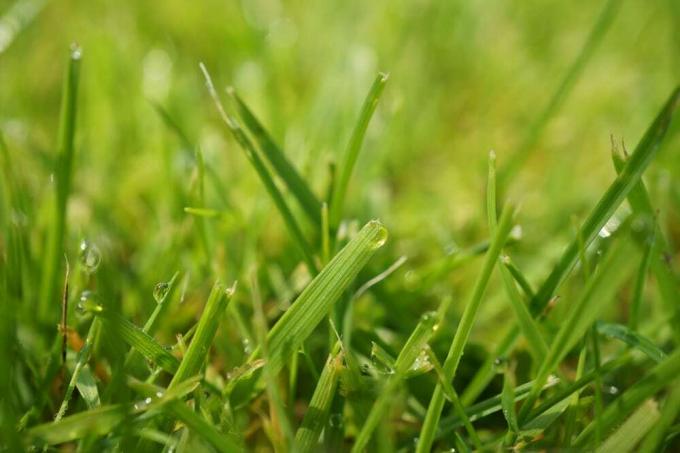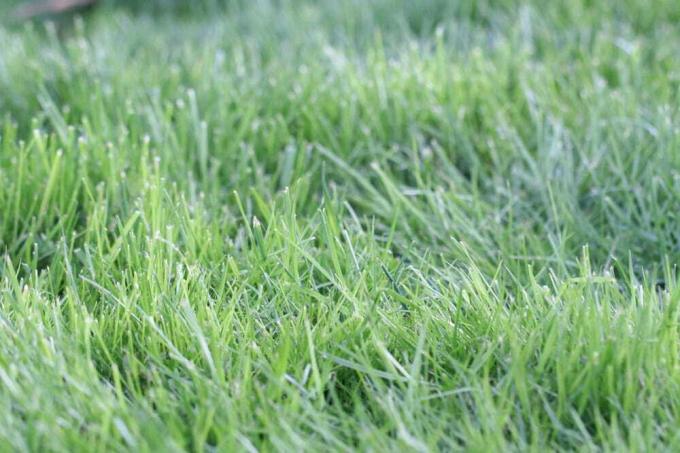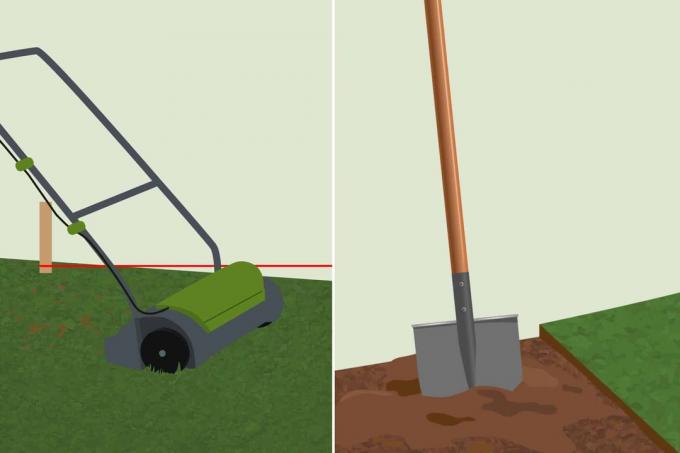

Table of contents
- Ammonium sulphate compensates for nitrogen deficiency
- Test the pH beforehand
- Fertilize with ammonium sulfate
- As a scattering agent
- As a liquid fertilizer
- Not suitable as an autumn fertilizer
So that your lawn quickly overcomes the hardships of winter, sulfuric ammonia has proven to be a tried and tested fertilizer. The mineral fertilizer has an effective combination of nitrogen and sulfur. With this start-up aid you strengthen the growth of noble grasses and annoying weeds are left behind. Our green guide has set itself the task of providing you with practical information on the competent use of ammonium sulphate fertilizer for lawns.
Ammonium sulphate compensates for nitrogen deficiency
Healthy nutrition is just as important for a lawn as it is for humans and animals. For noble grasses, the main nutrient on the green diet is nitrogen, which is the engine of growth. Nitrogen makes a significant contribution to photosynthesis, so that the lawn thrives as a dense, lush green carpet. Deficiency symptoms can be recognized by yellowish stalks, stunted growth and sprouting weeds. The undersupply does not arise because your lawn has consumed the nutrient supply. Rather, the soil cannot store the existing nitrogen for long. To make matters worse, large amounts of nitrogen are washed out of the soil.
In the form of ammonium sulphate fertilizer with 21 percent nitrogen and 24 percent sulfur, fresh nutrient replenishment reaches the grass and compensates for the deficiency. Specifically, it is an easily degradable salt that is approved in the EU as a food additive E 517. The combination with sulfur as a water-soluble sulphate optimizes the absorption capacity of the lawn grass for nitrogen. At the same time, the pH value in the soil is reduced to a moderate extent.
Test the pH beforehand
The property of sulphate of ammonia to lower soil pH is desirable only when the level is at acceptable or too high levels. The ideal pH level for your lawn is between 6 and 7. Excessive fertilizing with lime causes the value to skyrocket, which can be seen in the increased growth of clover and the like. If the value falls into the acidic range below 6, moss has the upper hand over the lawn grasses.

When the lawn care window opens in spring, a pH value test should be at the top of the to-do list. In garden centers and hardware stores you can buy test sets at a reasonable price. A score below 6 requires that you lime your lawn first to regulate soil acidity. After waiting 2 to 3 weeks, administer the ammonium sulphate fertilizer. If the pH value test produces a result of 6 to 7 or higher, the addition of lime from the Care plan canceled in order to avoid sulfuric acid ammonia on the green area without this intermediate step to bring out
Tip:
Inorganic compounds as nitrogen fertilizers are frowned upon in ecologically oriented gardens. Horn shavings and horn meal contain 12 percent nitrogen and are ideal for the organic nutrient supply of lawns. The only disadvantage is a waiting period of at least two months before the noble grasses benefit from the nitrogen. The beneficial effect lasts for several months.
Fertilize with ammonium sulfate
Have you prescribed ammonia sulphate to encourage weed-free, dense growth in your lawn? Then you can administer the fertilizer as a spreading agent or in liquid form with the watering can. Choose an overcast, slightly rainy day as the date so that the grass can absorb the preparation better. Here’s how to do it professionally:
As a scattering agent
- Pour ammonium sulphate fertilizer into a spreader
- Adjust dosage to 80 grams per square meter
- Walk across the lawn with the spreader in longitudinal lanes
- Avoid overlapping the tracks
- In dry weather, sprinkle with water afterwards
As a liquid fertilizer
- Dissolve 45 to 50 grams of fertilizer in a 10 liter watering can
- Spread 1 watering can of the fertilizer solution per square meter of lawn

Apply liquid ammonium sulphate fertilizer more sparingly with the spray bottle. If you choose this alternative, you can reduce the dosage to 35 grams per 10 liters. Many manufacturers recommend dosing ammonia sulphate between April and September at two month intervals. Top-up fertilization only proves to be actually necessary when the condition of the lawn necessitates an additional supply of nutrients.
Tip:
The willingness to absorb ammonium sulphate fertilizer is significantly increased if you scarify your lawn beforehand. A special scarifier thoroughly combs all weeds and moss out of the lawn.
Not suitable as an autumn fertilizer
If you want to strengthen your lawn again before winter, a nitrogen-rich fertilizer such as ammonium sulphate is out of place. Increased growth at the end of the season leaves thin-walled, water-rich cells in the grasses arise, which are markedly susceptible to freezing temperatures and fungal infections, such as snow mold. Therefore, give a potassium-rich lawn fertilizer in the fall, which explicitly strengthens the cell walls and lowers the freezing point in the cell water.
 Home editorial office
Home editorial office
Learn more about lawn care

Leveling out unevenness in the lawn: this is how it works
Unevenness in the lawn is annoying and poses a danger to gardeners, playing children and pets. There are a number of methods that can be used to level the lawn. We present them to you in our guide.

Leveling the lawn: how to smooth uneven surfaces
Dents and holes in the lawn are unsightly. We will show you step by step how to smooth uneven areas in the lawn again.

Algae in the garden | Lawn is slippery: what to do?
Algae love rainy days. Can the water seep badly into the ground, even better! The green, slippery mass is not only not a pretty sight, but also a danger for the lawn. Only those who act preventively and correctly in acute cases can avoid permanent damage.

Fighting fungi in the lawn | 10 tips against fungal infestation
Mushrooms in the lawn are not uncommon but annoying and sometimes even dangerous. This is especially true if the garden or green space is also used by pets and children. Here we will show you how to combat fungal infestation.

Aerate the lawn | Before or after mowing?
Sun, water, fertilizer and air are necessary for the lawn to grow. If the lawn does not get enough air, it cannot grow properly. We clarify when the right time to ventilate the lawn is.

Mulching with lawn clippings: 13 things to consider
Keeping the lawn short is a must for many hobby gardeners. However, if the lawn mower does not have a mulching function so that the grass clippings can remain on the lawn, the question arises as to where to put the waste. Because the compost heap is not a good solution here.



